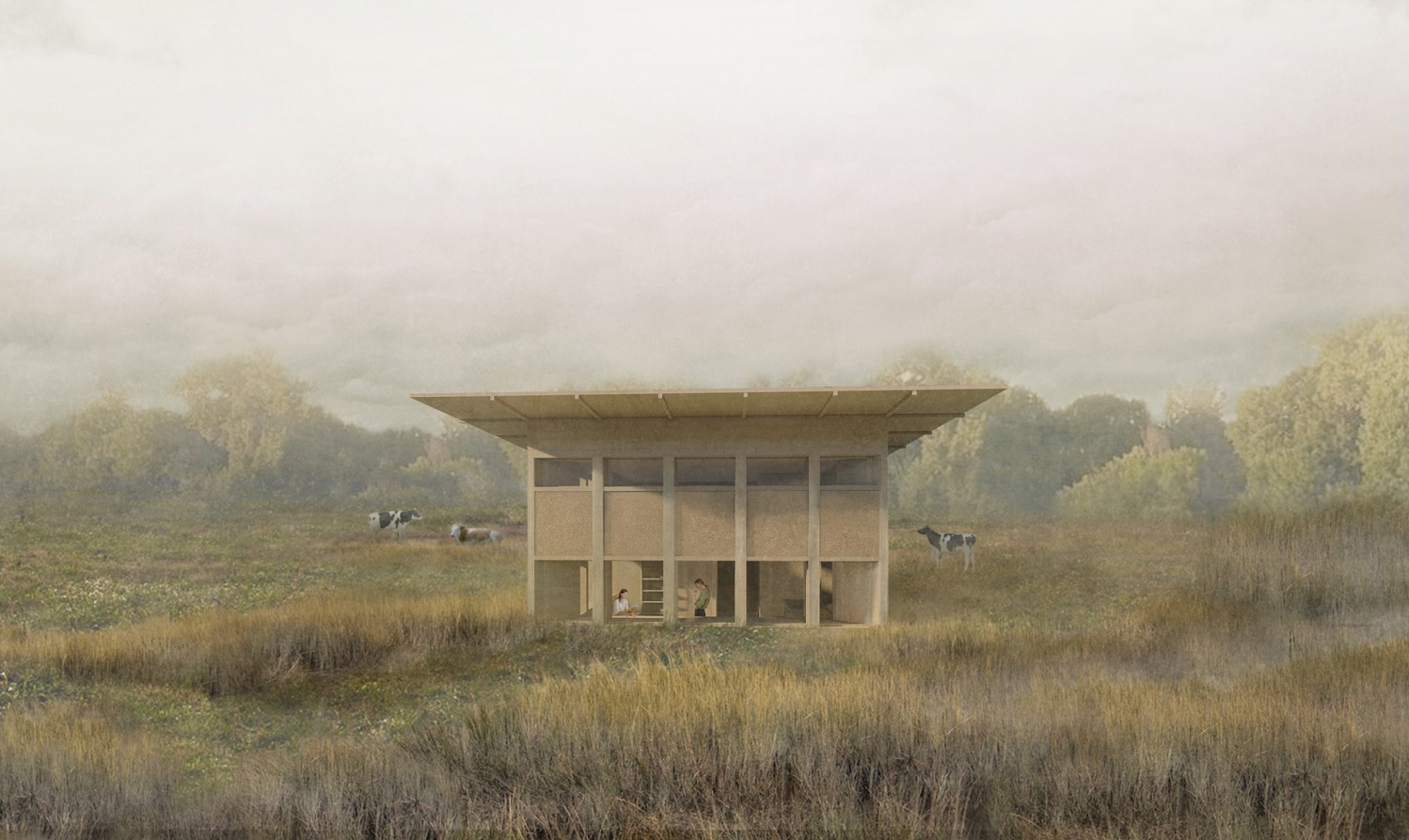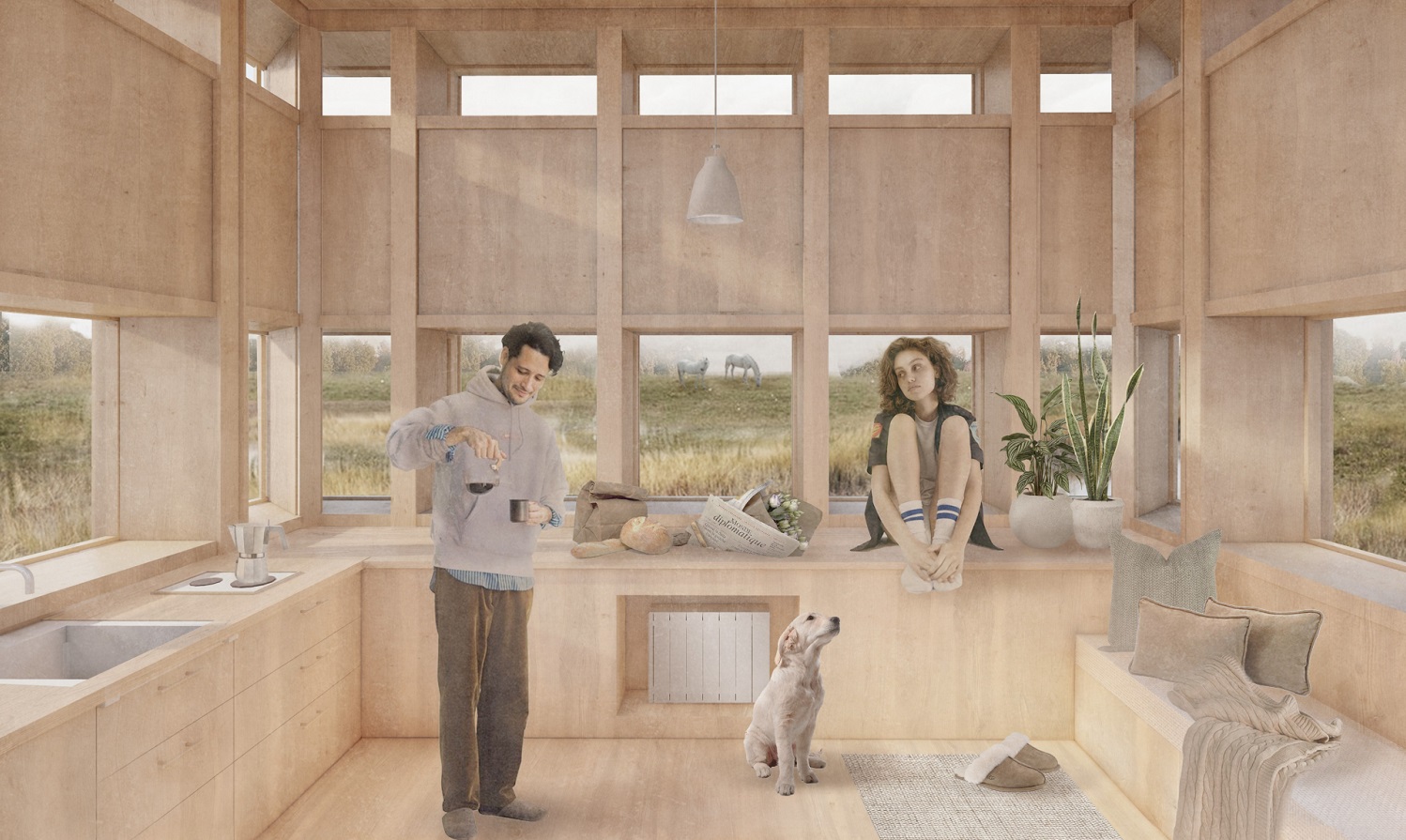Grounded House awarded in the MICROHOME competition

Grounded House was designed for rural areas in a temperate climate, authors of the project: Alicja Adela Jarochowska, Aleksandra Musiał
The design of a house constructed of soil, wood and potato cork by students of the Faculty of Architecture of the Warsaw University of Technology was awarded twice in the fifth edition of the MICROHOME competition.
The competition is organized by the Buildner platform, in cooperation with Archive Books. Its aim is to emphasize the importance of small architecture in the face of the residential, economic and climate crisis.
Participants could submit projects of small houses with an area of 25 m2 for two people, and they were free to choose the location, materials and functions. Modern solutions in the spirit of sustainable development and those that focus on a selected social problem were preferred.
The design by Aleksandra Musiał and Alicja Adela Jarochowska, students at the Warsaw University of Technology’s Faculty of Architecture, won third prize and the Buildner Student Award.
– Our Grounded House project – from the earth, about the earth and for the earth – is a house designed for rural areas in a temperate climate. We focused on this location not only because it is close to us, but also to take on the challenge of an unpopular climate zone in the competition – most participants design for the warm climate, thus avoiding the issue of energy and building insulation, say the winners of the competition.
This small-sized house on a square plan is constructed of soil, wood and potato cork.
– Our additional mission is to 'disenchant' materials that are commonly associated negatively – cheap, dirty, not elegant, ugly. We wanted to show that compacted soil, energy from bio waste, and insulation from dried potatoes have nothing to do with these words. They can, however, be used in a certainly modern and aesthetic way and be an alternative to other, more popular materials, outdoing them in terms of their locality, efficiency and simplicity, explain the authors of the project.
The building is dug into the ground to a height of about one metre. On the one hand, it is a symbolic gesture to bring people closer to nature, and on the other – a way to increase the thermal mass of the house.
The excavated earth was used by the students as insulation in modular boxes making up the structure. In addition, the authors decided to use cork from potato peelings: a simple yet surprising material. Cork was used for thermal insulation and applied to the façade of the building.
The heating and all the appliances in the house are powered by biomass, a tank for which is hidden under the terrace of the building. This solution allows users to produce energy regardless of the weather. Household members can use leftover food, fertilisers and other organic waste, thereby reducing the problem of food waste in rural areas.
Source: Architektura i Biznes










